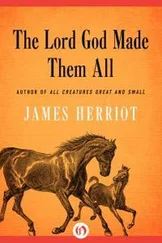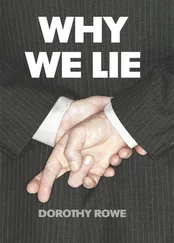He was in his late fifties, a fleshy man to whom life had been good, and he traveled with his wife, some years younger than himself, who managed the cameras and the checkbooks. They were a congenial pair, as beloved in the Holy Land as they were back home, and often they had helped rich widows write wills that bequeathed inheritances to the Biblical Museum for its excavations. They were honest people, the Brookses, and they believed in a simple, honest God; but as they finished their photographing tour in 1964 they were disturbed, and they conveyed their apprehension to Cullinane.
“John, I can’t approve what’s been going on here in Palestine,” Brooks said. As an older man, and as a member of the board that employed Cullinane, he always referred to the director as John, while as a fundamentalist he continued to refer to the new state of Israel as Palestine. “I don’t like it at all.”
“What’s wrong?”
“Who wants to see a great gaping ditch running smack down the middle of the Holy Land?”
“They’ve got to have water,” Cullinane said.
“Granted, but Grace and I reflected many times that all these factories…these macadamed roads. Really, they destroy the feeling we used to get from this land.”
“They do, John,” Mrs. Brooks agreed. “I remember when we first came here…the British administered it then, and it looked just as it must have in Bible times.”
“We took some of our greatest photographs in those happy days,” Brooks sighed. “I only wish Kodak had had a better color film in those years. The reds have faded from our best slides and we can’t use them any more.”
“But today,” Mrs. Brooks continued, “you can hardly take a photograph anywhere that tells an audience clearly that you’re in the Holy Land. Now it’s all towns and building developments.”
“I take it you’re rather strongly opposed to progress?” Cullinane suggested.
“Oh, there ought to be some progress in the world,” Brooks conceded, “but it does seem a shame to ruin a land that is so much beloved by people everywhere. I can remember when we first came here, you could find in almost any village a water well which looked exactly as it must have in the time of Christ. We got some of the most extraordinary pictures of women walking to the well with great earthenware jars on their heads. You could have sworn it was Miriam or Rachel. Now it’s nothing but deep artesian wells.”
“Your home’s in Davenport, isn’t it?” Cullinane asked, leaning back in his chair.
“When we can find some time for ourselves,” Mrs. Brooks said. “Mostly we travel.”
“Hasn’t Davenport changed pretty much … in the last thirty years?”
“Davenport’s different. It’s not a holy land to anyone. But Palestine … I hate to say this, John, since you’re working on this side, but Mrs. Brooks and I felt much more at home on the other side of the border. In Jordan. They’ve kept their land pretty much as it used to be. One gets a much better sense of the Holy Land in Muslim Jordan than he does over here in the Jewish sector.” Cullinane noticed that Brooks clung to the old English terminology: the Jewish sector.
“What we mean,” Mrs. Brooks explained, “is that in Jordan today you can still find hundreds of scenes with people in Biblical costume…little donkeys…heavenly-faced children playing by the open wells. You can point your camera almost anywhere and catch a Bible picture. It makes your heart feel warm.”
“You don’t get that feeling in Israel?” Cullinane asked.
His use of the current name for the new nation seemed to offend the Brookses, and the professor quickly re-established the accurate terminology. “This part of Palestine is frankly disappointing. I might almost say irritating. You go to a historic spot like Tiberias, hoping to find something that will evoke for people in Iowa the romantic quality of the place, and what do you find? Housing developments…bus stations … a tourist hotel…and on the very edge of that sacred lake, what? A kibbutz, if you like.
“And if you do try to take a photo that will catch the essence of the place, you don’t find people dressed as they are on the other side. Those wonderful garments that make you think of Jesus or the disciples. No, you find men and women dressed just as they would be in Davenport. Carrying plastic bags back from the supermarket. I saw not a thing in Tiberias that reminded me of the Bible.”
“There were a lot of Jews,” Cullinane said.
“I don’t think that’s funny, John,” Brooks said. He tried to avoid using the word Jew; he had been instructed that the people of that religion preferred to be called Hebrews.
“Aren’t you saying,” Cullinane asked, “that the Muslims on the other side look more like Biblical Jews than the living descendants of the Biblical people do?”
“I’m not saying that at all,” Brooks protested. “But when a land has a special meaning for so many, it ought to be kept…well…rural.”
Cullinane bit his lip and tried to keep from smiling. “A good deal of Christ’s ministry must have been spent in cities,” he pointed out. “Jerusalem, Jericho and Caesarea Philippi. And when you get to St. Paul, he seems to have spent most of his time arguing Christianity in the great cities like Corinth, Antioch and Caesarea.”
“That’s true,” Brooks said, “but I believe that most Americans like to think of Bible figures as living in the countryside. It seems to make them more…well…reverential.”
Cullinane thought that that might be one of the reasons why Christianity was having such a difficult time with some of its urban adherents, that they could not visualize Christ as inhabiting cities, where more and more of the population chose to live. He said, “When Jesus was in Jerusalem or Paul in Athens those cities must have been much like New York. I know that when we dig here at Makor we have to remind ourselves all the time that this was an urban settlement, while Akko down the road was always a fairly substantial city. And I’m not at all sure that Jesus went around, or Paul either, looking like a modern-day Arab.”
“I’m fairly well satisfied that they did,” Brooks said. Then, to ease the tension a bit, for he felt that Cullinane was being obstinate in not understanding his basic argument, he said, “The trip wasn’t a failure. Grace and I caught some wonderful shots at Jericho. What a marvelous spot. You could almost feel Old Testament people moving among those ancient ruins.”
“I suppose you got some Arabs to pose for you,” Cullinane said.
“Two handsome fellows. When they took their shoes off they looked just like prophets from the Old Testament.”
“I still wonder if Jeremiah dressed like an Arab.”
“Our audiences think he did,” Mrs. Brooks retorted. “Now, I’m sure you’re doing some excellent work here, John, but we couldn’t photograph it. Not for our purposes. Because the young people I see out there look like ordinary Americans. It would kill the atmosphere.”
“I suppose in years to come,” Cullinane said, looking up at the ceiling, “you’ll take more and more of your photographs outside of Israel.”
“We’ll have to,” Professor Brooks said. “The Hebrews here simply don’t look right. And every new town or factory eliminates one more possible landscape. We’re forced to work in the other side.”
“But when Jordan succeeds in transforming itself into a modern nation, then what?”
“I’ve thought about that,” Brooks said. “As a matter of fact, right outside Jericho there’s some building going on that pretty much spoils that landscape. So next year we’re coming back with a great deal of film, and we’re going to shoot everything we can and keep it on file.”
Читать дальше

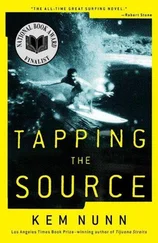



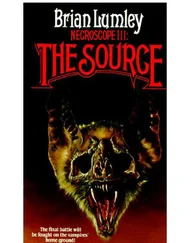
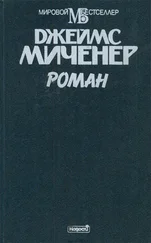

![Джеймс Купер - Пионеры, или У истоков Саскуиханны [The Pioneers, or The sources of the Susquehannah]](/books/395797/dzhejms-kuper-pionery-ili-u-istokov-saskuihanny-t-thumb.webp)
